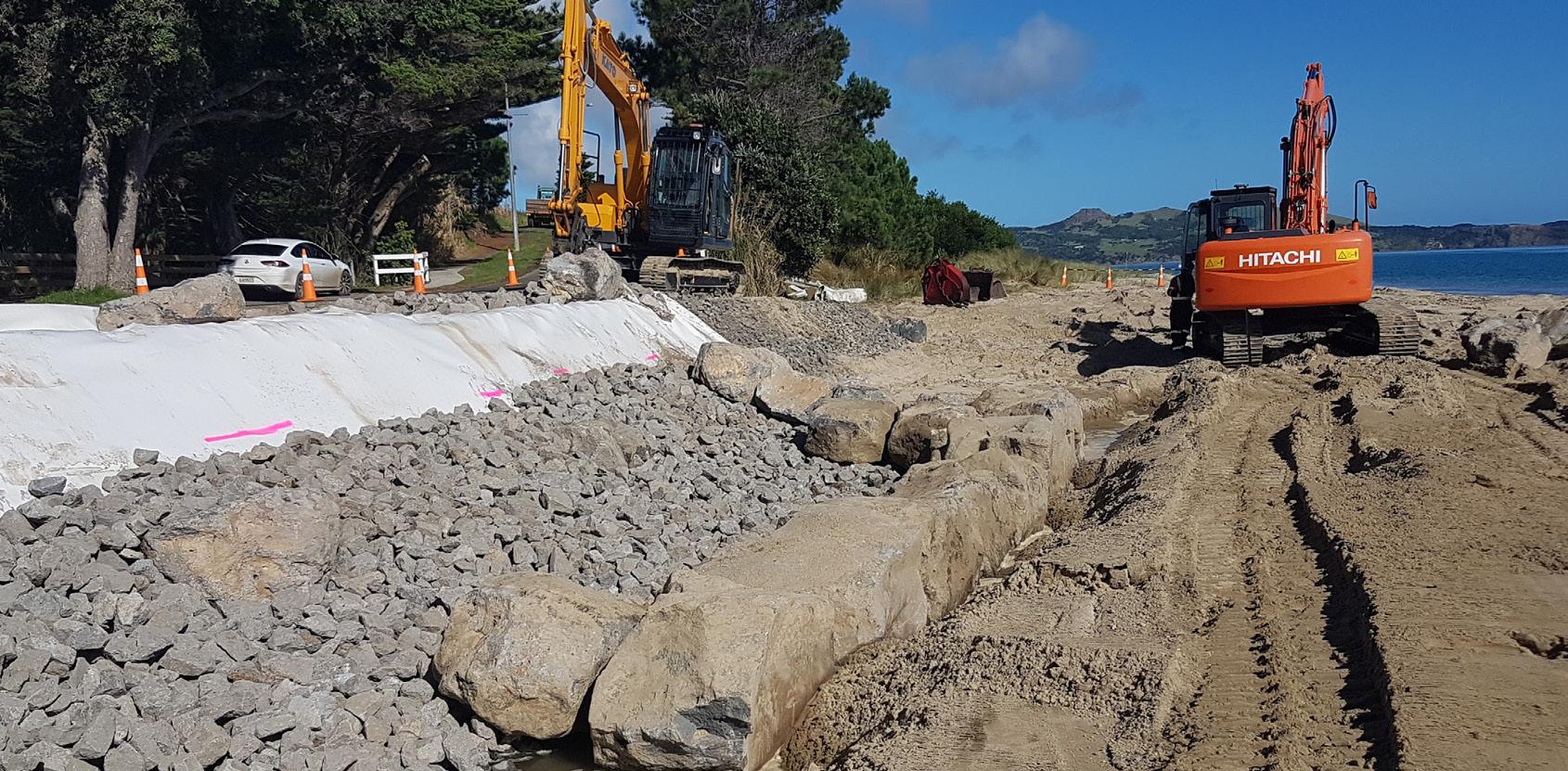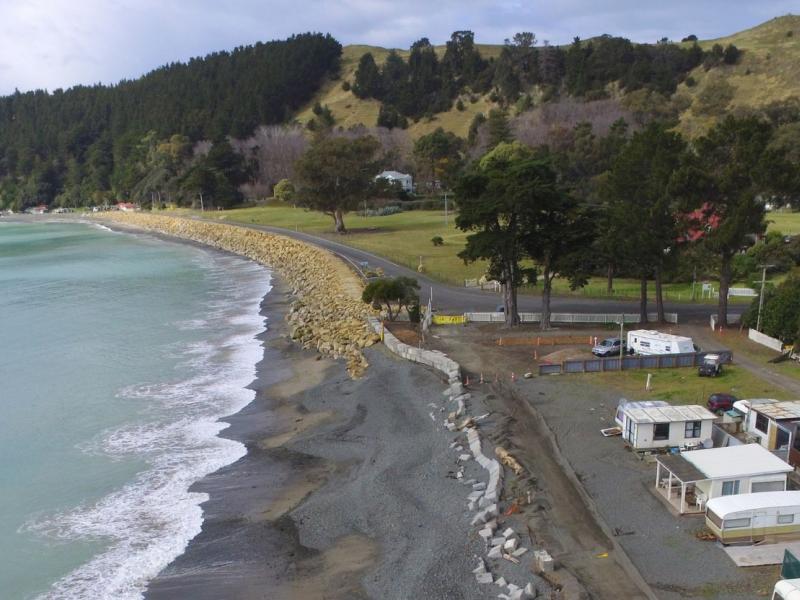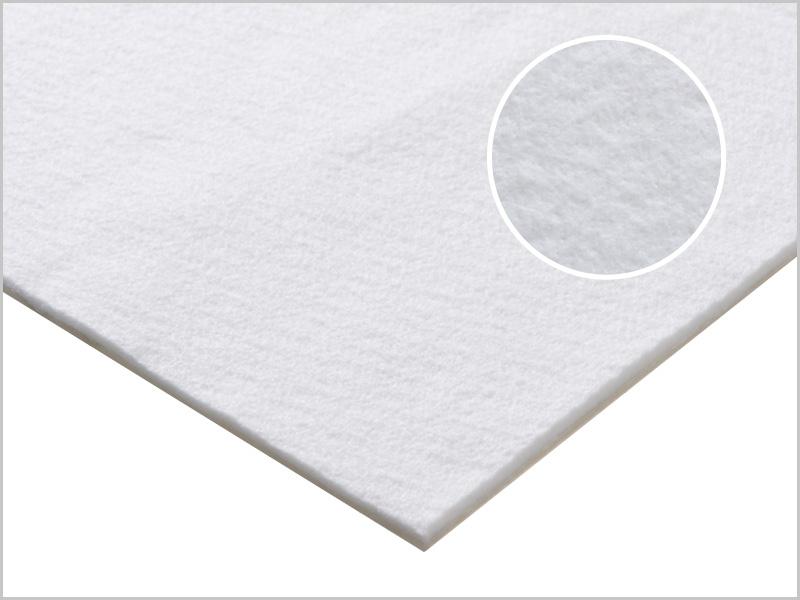
Opononi Sea Wall

In Opononi located on SH12 the foreshore had suffered recent erosion which was threatening the state highway at multiple locations. SH12 is a key part of the Twin Coast Discovery Route and improving the transport network will make travel for visitors and locals safer, while also enabling future growth and development of the region.
For this project, WSP undertook a dynamic adaptive planning pathway process to develop a suitable corridor management strategy to guide works in this challenging and changing, important coastal roading link. The strategy involved risk management, coastal assessments and long-term management of both soft and hard possible solutions. They also identified areas that required immediate intervention.
To mitigate the immediate risk of losing the section of road in the next extreme weather events, Opononi township was identified for a rock revetment wall. Coastal works involved multiple stakeholders and a complex environment. This section of revetment wall balanced available funds with the prompt solution required while considering the uncertainty of climate change and rising sea levels. This was achieved by providing a flexible solution that allowed space for future expansions or actions.
Design was focused on the waves’ energy during storm events, the dissipation of their energy and the loss of beach and scour.
To dissipate the energy, as opposed to reflecting the waves to cause problems elsewhere, resulted in the solution of a sloped revetment wall. The wall would have a filter layer to retain the sand backslope material, a carefully sized protective underlay with durable specifically selected size, shape and weight graded Armourstone. These factors, the shape, the structures elevation, slope, site exposure, toe founding conditions, a scour apron and a crest bench were all carefully considered and critical to the project success in keeping the road open.
During the design stages of the project, Geofabrics supplied technical data on Texcel 1200R along with alternative construction solutions such as sewing which was ultimately used in the project. As per the design and installation guidelines, the Texcel 1200R was installed with both a toe and crest with a fall of 1V:2H. The toe has a two-metre embedment into the sand and crest having a 2.25 metre width. To provide protection to the Texcel 1200R, two layers of armourstone solid rock were used (1100kg as the primary armory with 5 kg-40 kg rocks as the secondary armory) all off which was installed by Northland Transport using rock from the local quarry and installed using excavators. During the installation of the Texcel 1200R, a prayer seam stitch was used to reduce the overlay which was required. The stitch was made using a Class 2200 Union special sewing machine.
The contractor was able to place the Sewn Seam across the face (right angles to the slope) rather than down the face (in the direction to the slope) as required when overlapping. This greatly assisted in the methodology of construction on site in difficult running sand and underwater site conditions. The seam is turned down so that the exposed face is smooth, to avoid collecting debris or affected by hydraulic pressures of wave running up or down the slope. With the use of a sewing seam, it also reduced the overlap required from 300 mm down to 100 mm. This in turn was able to save the contractor both time and material which resulted in a cost reduction to the end client.
Upon completion, there have been a number of stormy weather conditions which have tested the coastal wall. Although the wall has only recently been completed, the wall preformed as designed with no erosion of the embankment and no sign of damaged Texcel has been observed. All parties involved with the project have been pleased with the end result as both the budget and time constraints have been meet providing a high-quality finish which will serve the Far North community for years to come.



